
Scientometrics.
Kwiek, Marek, Roszka, Wojeciech (2022). Academic vs. biological age in research on academic careers: a large-scale study with implications for scientifically developing systems. Scientometrics (2022). https://doi.org/10.1007/s11192-022-04363-0 or here.
Abstract: Biological age is an important sociodemographic factor in studies on academic careers (research productivity, scholarly impact, and collaboration patterns). It is assumed that the academic age, or the time elapsed from the frst publication, is a good proxy for biological age. In this study, we analyze the limitations of the proxy in academic career studies, using as an example the entire population of Polish academic scientists and scholars visible in the last decade in global science and holding at least a PhD (N=20,569). The proxy works well for science, technology, engineering, mathematics, and medicine (STEMM) disciplines; however, for non-STEMM disciplines (particularly for humanities and social sciences), it has a dramatically worse performance. This negative conclusion is particularly important for systems that have only recently visible in global academic journals. The micro-level data suggest a delayed participation of social scientists and humanists in global science networks, with practical implications for predicting biological age from academic age. We calculate correlation coefcients, present contingency analysis of academic career stages with academic positions and age groups, and create a linear multivariate regression model. Our research suggests that in scientifcally developing countries, academic age as a proxy for biological age should be used more cautiously than in advanced countries: ideally, it should be used only for STEMM disciplines.

Scientometrics.
Kwiek, Marek & Roszka, Wojciech (2022). Are female scientists less inclined to publish alone? The gender solo research gap. Scientometrics (2022), 1-39. https://doi.org/10.1007/
Abstract: In solo research, scientists compete individually for prestige, sending clear signals about their research ability, avoiding problems in credit allocation, and reducing conflicts about authorship. We examine to what extent male and female scientists differ in their use of solo publishing across various dimensions. This research is the first to comprehensively study the “gender solo research gap” among all internationally visible scientists within a whole national higher education system. We examine the gap through mean “individual solo publishing rates” found in “individual publication portfolios” constructed for each Polish university professor. We use the practical significance/statistical significance difference (based on the effect-size r coefficient) and our analyses indicate that while some gender differences are statistically significant, they have no practical significance. Using a partial effects of fractional logistic regression approach, we estimate the probability of conducting solo research. In none of the models does gender explain the variability of the individual solo publishing rate. The strongest predictor of individual solo publishing rate is the average team size, publishing in STEM fields negatively affects the rate, publishing in male-dominated disciplines positively affects it, and the influence of international collaboration is negative. The gender solo research gap in Poland is much weaker than expected: within a more general trend toward team research and international research, gender differences in solo research are much weaker and less relevant than initially assumed. We use our unique biographical, administrative, publication, and citation database (“Polish Science Observatory”) with metadata on all Polish scientists present in Scopus (N = 25,463) and their 158,743 Scopus-indexed articles published in 2009–2018, including 18,900 solo articles.

Journal of Informetrics.
Kwiek, Marek & Roszka, Wojciech (2021). Gender-Based Homophily in Research: A Large-scale Study of Man-Woman Collaboration, Journal of Informetrics. 35(3), August 2021, 101171. 1-26. https://doi.org/10.1016/j.joi.
Abstract: We examined the male-female collaboration practices of all internationally visible Polish university professors (N = 25,463) based on their Scopus-indexed publications from 2009–2018 (158,743 journal articles). We merged a national registry of 99,935 scientists (with full administrative and biographical data) with the Scopus publication database, using probabilistic and deterministic record linkage. Our unique biographical, administrative, publication, and citation database (“The Polish Science Observatory”) included all professors with at least a doctoral degree employed in 85 research-involved universities. We determined what we term an “individual publication portfolio” for every professor, and we examined the respective impacts of biological age, academic position, academic discipline, average journal prestige, and type of institution on the same-sex collaboration ratio. The gender homophily principle (publishing predominantly with scientists of the same sex) was found to apply to male scientists—but not to females. The majority of male scientists collaborate solely with males; most female scientists, in contrast, do not collaborate with females at all. Across all age groups studied, all-female collaboration is marginal, while all-male collaboration is pervasive. Gender homophily in research-intensive institutions proved stronger for males than for females. Finally, we used a multi-dimensional fractional logit regression model to estimate the impact of gender and other individual-level and institutional-level independent variables on gender homophily in research collaboration.

Higher Education.
Kwiek, Marek (2021). The Prestige Economy of Higher Education Journals: A Quantitative Approach. Higher Education. 81. 493–519. https://doi.org/10.1007/
Abstract: This study addresses stratification in the global higher education research community and the changing geography of country affiliations in six elite journals. The distribution of country affiliations is analyzed from a longitudinal perspective (1996–2018), and full-time and part-time authors in the field are contrasted. The prestige maximization model and principal-agent theory provide the theoretical framework for the study, which examines 6334 articles published in six elite journals in the context of 21,442 articles in 41 core journals. The findings indicate that about 3.3% of academics have authored at least five articles (full-timers). These authors constitute the publishing core of the research community, while the 80% who have authored one article (part-timers) constitute its periphery. Higher Education (HE) and Studies in Higher Education (SHE) emerge as elite global journals, with an increasing share of non-Anglo-Saxon authors. Previously globally invisible countries became visible almost exclusively through HE and SHE. Global trends include the diminishing role of American researchers and the increasing role of researchers from Continental Europe, East Asia, and the cluster of 66 “other” countries. The single biggest affiliation loser is the United States, which had 42.5% of country affiliations in 1996–2003 but only 26.9% in 2012–2018. This reflects both the increasing share of non-American affiliations and the increasing yearly volume of HE and SHE publications, in which US academics tend not to publish massively.
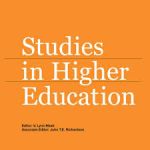
Studies in Higher Education.
Kwiek, Marek (2021). What Large-Scale Publication and Citation Data Tell Us About International Research Collaboration in Europe: Changing National Patterns in Global Contexts. Studies in Higher Education. 46(12), 2629-2649.. https://doi.org/10.1080/
Abstract: This study analyzes the unprecedented growth of international research collaboration (IRC) in Europe during the period 2009–2018 in terms of co-authorship and citation distribution of globally indexed publications. The results reveal the dynamics of this change, as growing IRC moves European science systems away from institutional collaboration, with stable and strong national collaboration. Domestic output has remained flat. The growth in publications in major European systems is almost entirely attributable to internationally co-authored papers. A comparison of trends within the four complementary collaboration modes clearly reveals that the growth of European science is driven solely by internationally co-authored papers. With the emergence of global network science, which diminishes the role of national policies in IRC and foregrounds the role of scientists, the individual scientist’s willingness to collaborate internationally is central to advancing IRC in Europe. Scientists collaborate internationally when it enhances their academic prestige, scientific recognition, and access to research funding, as indicated by the credibility cycle, prestige maximization, and global science models. The study encompassed 5.5 million Scopus-indexed articles, including 2.2 million involving international collaboration.

Journal of Economic Surveys.
Kwiek, Marek & Roszka, Wojciech (2021). Gender Disparities in International Research Collaboration: A Large-scale Bibliometric Study of 25,000 University Professors. Journal of Economic Surveys. On-line first. 1-37. https://doi.org/10.1111/joes.12395 or here.
Abstract: In this large-scale research based on bibliometric, biographical and administrative data, we examine how gender disparities in international research collaboration differ by collaboration intensity, academic position, age, and academic discipline. The following are the major findings: (1) While female scientists exhibit a higher rate of general, national, and institutional collaboration, male scientists exhibit a higher rate of international collaboration. (2) An aggregated picture of gender disparities hides a more nuanced cross-disciplinary picture of them. (3) An analysis of international research collaboration at three separate intensity levels (low, medium, and high) reveals that male scientists dominate in international collaboration at each level. However, at each level, there are specific disciplines in which females collaborate internationally more than males. Furthermore (4), gender disparities in international research collaboration are clearly linked with age: they are the lowest and statistically insignificant for young scientists and the highest and statistically significant for the oldest scientists. Finally, we estimate the odds ratios of being involved in international research collaboration using an analytical linear logistic model. The examined sample includes 25,463 internationally visible Polish university professors from 85 universities, grouped into 24 disciplines, and 158,743 Scopus-indexed articles.

Higher Education.
Marek Kwiek, The Prestige Economy of Higher Education Journals: A Quantitative Approach. Higher Education. Online first June 13, 2020. https://doi.org/10.1007/
Abstract: This study addresses stratification in the global higher education research community and the changing geography of country affiliations in six elite journals. The distribution of country affiliations is analyzed from a longitudinal perspective (1996–2018), and full-time and part-time authors in the field are contrasted. The prestige maximization model and principal-agent theory provide the theoretical framework for the study, which examines 6334 articles published in six elite journals in the context of 21,442 articles in 41 core journals. The findings indicate that about 3.3% of academics have authored at least five articles (full-timers). These authors constitute the publishing core of the research community, while the 80% who have authored one article (part-timers) constitute its periphery. Higher Education (HE) and Studies in Higher Education (SHE) emerge as elite global journals, with an increasing share of non-Anglo-Saxon authors. Previously globally invisible countries became visible almost exclusively through HE and SHE. Global trends include the diminishing role of American researchers and the increasing role of researchers from Continental Europe, East Asia, and the cluster of 66 “other” countries. The single biggest affiliation loser is the United States, which had 42.5% of country affiliations in 1996–2003 but only 26.9% in 2012–2018. This reflects both the increasing share of non-American affiliations and the increasing yearly volume of HE and SHE publications, in which US academics tend not to publish massively.

Trends and Issues in Doctoral Education.
Marek Kwiek, Poland: An Abundance of Doctoral Students But a Scarcity of Doctorates. In: Philip G. Altbach, Hans de Wit, Maria Yudkevich (eds.), Doctoral Education at a Global Crossroads: An International Research Inquiry. New York: Palgrave Macmillan. 2020. 103-126. Here.
Abstract: The massification of doctoral studies in Poland has not led to an equivalent increase in doctoral degrees. While the number of doctoral students increased steadily through the 1990s and 2000s, the number of doctorates awarded did not follow suit. Many students entered doctoral programs, but only a minority were ever awarded the degree, as most either dropped out or completed the program but did not defend their dissertation. This disparity between entrants and doctoral degrees awarded is central to understanding the emergent tensions around doctoral education in the Polish context. Based on international comparative statistics, the current intake of 43,000 doctoral students combines overproduction of doctoral students and a scarcity of doctorates. In the Polish context, only one in four doctoral students are ultimately awarded a doctoral degree. It follows that the processes affecting the distribution of doctoral education differ from those that determine the distribution of doctorates. The emergent tensions reveal the fundamental difference between the changing higher education system in terms of teaching (where the Bologna Process places doctoral education) and research (where doctorates awarded belong). In Poland, there is the further difference of national statistics, as fields of study used to report doctoral student numbers differ from those used to report doctorates awarded. What has changed fundamentally during this time, however, is the gender composition of doctorate holders, with a gradually increasing share of female doctorates. While 31% of doctorates in 1990 were awarded to females, the percentage rose after a decade of change—to 42% in 2000, and to 53% by 2010. From a gender perspective, the turning point was 2008 when, for the first time in the history of Polish science, the number of female doctorates exceeded the number of male doctorates. Currently, reforms are accelerating and the expectation is that public funding for both higher education and for academic research will be higher. In the center of the reform package there is a concept of competition: between research teams, academic units and institutions, with a new model of academic research assessment to be applied in 2021. The concept includes also new doctoral schools competing for public subsidies and top minds.

Scientometrics.
Kwiek, Marek (2020). Internationalists and Locals: International Research Collaboration in a Resource-Poor System. Scientometrics. Vol. 124. 57-105. https://doi.org/10.1007/
Abstract: The principal distinction drawn in this study is between research “internationalists” and “locals.” The former are scientists involved in international research collaboration while the latter group are not. These two distinct types of scientist compete for academic prestige, research funding, and international recognition. International research collaboration proves to be a powerful stratifying force, involving two parallel processes: “internationalization accumulative advantage” and “internationalization accumulative disadvantage.” As a clearly defined subgroup, internationalists are a different academic species, accounting for 51.4% of Polish scientists; predominantly male and older, they have longer academic experience and higher academic degrees and occupy higher academic positions. Across all academic clusters, internationalists consistently produce more than 90% of internationally co-authored publications, representing 2,320% of locals’ productivity for peer-reviewed articles and 1,600% for peer-reviewed article equivalents. Internationalists tend to spend less time than locals on teaching-related activities, more time on research, and more time on administrative duties. Based on a large-scale academic survey (N = 3,704), some new predictors of international research collaboration were identified by multivariate analyses. The findings have global policy implications for resource-poor science systems “playing catch-up” in terms of academic careers, productivity patterns, and research internationalization policies.

Studies in Higher Education.
Marek Kwiek, What Large-Scale Publication and Citation Data Tell Us About International Research Collaboration in Europe: Changing National Patterns in Global Contexts. Studies in Higher Education. Vol. 45. On-line first. 1-32. Here.
Abstract: This study analyzes the unprecedented growth of international research collaboration (IRC) in Europe during the period 2009–2018 in terms of co-authorship and citation distribution of globally indexed publications. The results reveal the dynamics of this change, as growing IRC moves European systems away from institutional collaboration, with stable and strong national collaboration. Domestic output has remained flat. The growth in publications in major European systems is almost entirely attributable to internationally co-authored papers. A comparison of trends within the four complementary collaboration modes clearly reveals that the growth of European science is driven solely by internationally co-authored papers. With the emergence of global network science, which diminishes the role of national policies in IRC and foregrounds the role of scientists, the individual scientist’s willingness to collaborate internationally is central to advancing IRC in Europe. Scientists collaborate internationally when it enhances their academic prestige, scientific recognition, and access to research funding, as indicated by the credibility cycle, prestige maximization, and global science models. The study encompassed 5.5 million Scopus-indexed articles, including 2.2 million involving international collaboration.

European Parliament.
Marek Kwiek, Internationalisation of EU Research Organisations. A Bibliometric Stocktaking Study (A Study for the European Parliament, Panel for the Future of Science and Technology). Brussels: European Parliament, 2019 (114 pp.). Here.
Abstract: International research collaboration (IRC) is at the core of contemporary higher education and science systems, and the percentage of internationally co-authored publications globally and across Europe is on the rise. The aim of this study is to analyse, based on large-scale data on publication and citation trends over time (within the last decade), the changing nature of academic knowledge production in all European Union Member States (EU-28) and the trend towards its radically increasing internationalisation. The study combines theoretical knowledge about IRC with the most up-to-date empirical data and their analysis. This quantitative study analyses the macro-level of countries and the meso-level of flagship institutions to assess the cross-national and cross-institutional differentiation in the pace of these changes and their depth. The report uses Scopus and SciVal data for 2007-2017, and the analysis of collaboration in research is based on bibliometric data on publications and citations. The empirical analysis is preceded by a section on the motivations and another on the major barriers connected with the processes of research internationalisation. The study suggests policy options to improve international research collaboration at the European level.

Higher Education Quarterly.
Marek Kwiek, Social Stratification in Higher Education: What It Means at the Micro-Level of the Individual Academic Scientist. Higher Education Quarterly. Vol. 73. Issue 3. 419-444. Here.
Abstract: The academic profession is internally divided as never before. This cross‐national comparative analysis of stratification in Higher Education is based on a sample of European academic scientists (N = 8,466) from universities in 11 countries. The analysis identifies three types of stratification: academic performance stratification, academic salary stratification, and international research stratification. This emergent stratification of the global scientific community is predominantly research‐based, and internationalisation in research is at its centre; prestige‐driven, internationally competitive, and central to academic recognition systems, research is the single most stratifying factor in Higher Education at the level of the individual scientist today. These stratification processes pull the various segments of the academic profession in different directions. The study analyses highly productive academics (‘research top performers’), highly paid academics (‘academic top earners’), and highly internationalised academics (‘research internationalists’) and explores the implications for individual scientists.
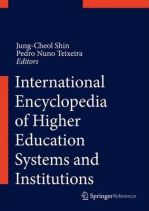
International Encyclopedia of Higher Education Systems.
Marek Kwiek, Krystian Szadkowski. Higher Education Systems and Institutions: Poland. In: International Encyclopedia of Higher Education Systems, Pedro N. Texteira and J.C. Shin, eds. Cham: Springer, 2019. 1-20. Here.
Abstract: The changes in society and economy in Poland in the last two decades have been as fundamental as the changes in higher education. The growth in the proportion of the population with completed higher education programs, as illustrated by the difference between 25–34 year olds (43% in 2015) and 55–64 year olds (14%), was the most substantial change brought about by the development of the Polish higher education system following 1989. This substantial generational difference in qualification levels shows the scale of change in tertiary educational opportunities between the communist era of the 1980s and the massification era in the post-1989 period. In this chapter, we use a demographics-induced massification trend as the main point of reference for understanding the most important phenomena that shaped the higher education system and its institutions (governance, funding, and the academic profession). The rise and fall of student enrollments within the system is thus a background for the two fundamental dynamics (a) from privatization to de-privatization and (b) from deinstitutionalization to reinstitutionalization of the research mission of Polish higher education.
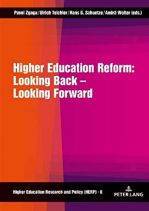
Higher Education Reform: Looking Back – Looking Forwards.
Marek Kwiek. Reforming European Universities: The Welfare State as a Missing Context. In: Pavel Zgaga, Ulrich Teichler, Hans G. Schuetze and Andrä Wolter, eds., Higher Education Reform: Looking Back – Looking Forwards. Frankfurt and New York: Peter Lang, 2019 (revised edn.). 9101-128. Here.
Abstract: This chapter is focused on the links between reform agendas and their rationales in higher education and in welfare state services across Europe. Lessons learnt from past and ongoing, as well as recently accelerating welfare state reforms following the fiscal crisis, can be useful in understanding ongoing and future higher education reforms. Research on reforming European welfare states is a missing context in research on reforming European universities. We intend to fill this gap and briefly explore possible links between these two largely isolated policy and research areas. European universities and European welfare states are closely linked today because they are heavily dependent on public funding – and the competition for public funding between the different claimants to it is on the rise. Reforms of both sectors are also closely linked to increasing intergenerational conflicts over public resources in aging societies, and pressures on both sectors are linked to the shrinking tax base, the power of the neoliberal ideology, and changing social attitudes to both welfare and universities. Problems of both sectors (which are high-spenders in terms of public funding) and solutions to them are increasingly being defined at a global level through transnational reform discourses. The indirect impact of aging societies on all public sector services will lead, it is argued, to growing pressures on all public expenditures and to the increased competition for all public funding. A new context of university reforms in Europe is therefore welfare state reforms. Thinking about university reforms in isolation from ongoing public sector reforms, from the ongoing fierce competition for public funding caused by the aging of European societies, and from future intergenerational conflicts over public resources, is potentially harmful to the university sector. The myth of exceptionalism of higher education among other public sector institutions and of its immunity from global public-sector reform trends increases the chances that higher education will be reformed mostly from the outside rather than mostly from the inside. We believe that it is important for the academic community to understand reforms in the higher education sector – and their rationales – in a wider social, political and economic context, so that the academic community can steer the changes rather than drift with them. Without such wider understanding of changing social realities, the sector may be more vulnerable to externally-driven instrumental reforms.

International Encyclopedia of Higher Education Systems.
Marek Kwiek. Private Higher Education in Developed Countries. In: International Encyclopedia of Higher Education Systems, Pedro N. Texteira and J.C. Shin, eds. Cham: Springer, 2019. 1-21. Here.
Abstract: The role of private higher education (PHE) varies by global region. Overall, its role has been smaller in developed countries than in developing countries and smaller than expected following the growth of privatization in the 1980s and 1990s. Exceptions include the United States (with its own PHE history and standards), Latin America (historically highest shares of enrollments), Asia (historically highest enrollments), and postcommunist Central and Eastern European systems (most rapid expansion of PHE). Although it is perhaps unwise to refer to “developed countries” as a whole in light of the cross-regional, intraregional, and cross-national heterogeneity of PHE, some generalization is possible in relation to PHE in OECD member states. Scholarly research on PHE remains scarce, with theoretical studies in only a handful of countries since the 1980s, most notably in the United States. Most are national case studies, predominantly descriptive and usually only loosely informed by theory. Aside from cross-national and intraregional comparative studies in Central and Eastern Europe and in Africa, empirical and theoretical studies of PHE are largely attributable to PROPHE. Much of the limited scholarly literature on PHE in developed countries relates to two European systems: Portugal and Poland.

Scientometrics.
Marek Kwiek. High Research Productivity in Vertically Undifferentiated Higher Education Systems: Who Are the Top Performers? Scientometrics. 115(1): 415-462. Here.
Abstract: The growing scholarly interest in research top performers comes from the growing policy interest in research top performance itself. A question emerges: what makes someone a top performer? In this paper, the upper 10% of Polish academics in terms of research productivity are studied, and predictors of entering this class are sought. In the science system (and Poland follows global patterns), a small number of scholars produce most of the works and attract huge numbers of citations. Performance determines rewards, and small differences in talent translate into a disproportionate level of success, leading to inequalities in resources, research outcomes, and rewards. Top performers are studied here through a bivariate analysis of their working time distribution and their academic role orientation, as well as through a model approach. Odds ratio estimates with logistic regression of being highly productive Polish academics are presented. Consistently across major clusters of academic disciplines, the tiny minority of 10% of academics produces about half (44.7%) of all Polish publications (48.0% of publications in English and 57.2% of internationally coauthored publications). The mean research productivity of top performers across major clusters is on average 7.3 times higher than that of the other academics, and in terms of internationally co-authored publications, 12.07 times higher. High inequality was observed: the average research productivity distribution is highly skewed with a long tail on the right not only for all Polish academics but also for top performers. The class of top performers is as internally stratified as that of their lower-performing colleagues. Separate regression models for all academics, science, technology, engineering and mathematics academics, and social sciences and humanities academics are built based on a large national sample (2525 usable observations), and implications are discussed.
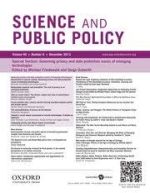
Science and Public Policy.
Marek Kwiek. Academic top earners. Research productivity, prestige generation, and salary patterns in European universities. Science and Public Policy. 45(1): 1-13. 2018. Here.
Abstract: This article examines highly paid academics—or top earners—employed across universities in ten European countries based on large-scale international survey data regarding the academic profession. It examines the relationships between salaries and academic behaviors and productivity, as well as the predictors of becoming an academic top earner. While, in the Anglo-Saxon countries, the university research mission typically pays off at an individual level, in Continental Europe, it pays off only in combination with administrative and related duties. Seeking future financial rewards solely through research does not seem to be a viable strategy in Europe, but seeking satisfaction in research through solving research puzzles is also becoming difficult, with the growing emphasis on the ‘relevance’ and ‘applicability’ of fundable research. Thus, both the traditional ‘investment motivation’ and ‘consumption motivation’ to perform research decrease, creating severe policy implications. The primary data come from 8,466 usable cases.

Journal of Studies in International Education.
Marek Kwiek. Poland: A Post-Communist High Partcipation System. In: Simon Marginson, Brendan Cantwell and Anna Smolentseva, eds., High Participation Systems of Higher Education. Oxford: Oxford University Press. 2018. 334-357. Here.
Abstract: Universities in Central and Eastern Europe have not been included in any of the major typologies of university governance and organization, such as those by Burton R. Clark (1983) and Robert Birnbaum (1988). The region, Poland included, finally seems to follow the global trend towards high participation. On the demand side, the advantage of participation over non-participation in higher education is becoming a social fact, social inclusion has expanded (even while educational and occupational competition for position has become harsher than ever before), and social demand and social aspirations for higher education are on the rise. All of this has been accompanied by changes on the supply side. There the elite universities are becoming more elite and, as Kerr’s multiversities, they are garnering ever more prestige and ever more funding from all sources possible. They are the winners in emergent post-2011 quasi-market resource allocation; and, though it is more difficult to measure (the proxy is KEJN scores) in the allocation of prestige. As elsewhere in HPS, the steep vertical hierarchy is reinforced by a permanent state-imposed and peer-run comparison of institutional research intensity. A HPS became the reality in Poland much faster than almost anywhere else, with still unclear consequences for the society, as well as for academic institutions. The conceptual framework of HPS explains what has happened in higher education in Poland since 1989, what may happen in the next few years, and why. Poland has experienced remarkable educational growth and contraction in the almost three decades since it left the Soviet bloc but throughout demographic ups and downs the rate of participation in tertiary education has increased. The leap in the gross tertiary enrolment ratio (GTER) in the last two decades was the highest among the eight systems under consideration in this book, from 32 per cent in 1995 to 71 per cent in 2013, almost 40 per cent in fewer than twenty years (see Chapter 1, Table 1.1). The changes in society and economy in Poland in the last two decades have been as fundamental as the changes in higher education participation. The two are strongly interrelated. The growth in the proportion of the population with completed higher education programmes, as illustrated by the difference between 25 – 34-year-olds (43 per cent) compared to 55 – 64-year-olds (14 per cent), was the highest in Poland of all the eight countries (see Chapter 1, Table 1.5). This substantial generational difference in the holding of qualifications shows the scale of change in tertiary educational opportunities between the pre-HPS communist era of the 1980s and the HPS era in the post 1989 period. This Polish case study was prepared in the light of the generic findings about HPS presented in Part I of High Participation Systems of Higher Education. This case of a formerly communist country changing into a market economy and a liberal democracy, entering the NATO, the OECD and the EU, while at the same time changing from a low participation system to an HPS, constitutes an interesting testing ground for the HPS hypotheses outlined at the beginning of the book.
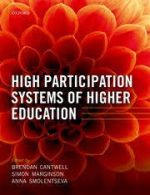
High Particpation Systems of Higher Education.
Marek Kwiek. Building a New Society and Economy: High Participation Higher Education in Poland. In: Simon Marginson, Brendan Cantwell and Anna Smolentseva, eds., High Participation Systems of Higher Education. Oxford: Oxford University Press. 2018. 334-357. Here.
Abstract: Universities in Central and Eastern Europe have not been included in any of the major typologies of university governance and organization, such as those by Burton R. Clark (1983) and Robert Birnbaum (1988). The region, Poland included, finally seems to follow the global trend towards high participation. On the demand side, the advantage of participation over non-participation in higher education is becoming a social fact, social inclusion has expanded (even while educational and occupational competition for position has become harsher than ever before), and social demand and social aspirations for higher education are on the rise. All of this has been accompanied by changes on the supply side. There the elite universities are becoming more elite and, as Kerr’s multiversities, they are garnering ever more prestige and ever more funding from all sources possible. They are the winners in emergent post-2011 quasi-market resource allocation; and, though it is more difficult to measure (the proxy is KEJN scores) in the allocation of prestige. As elsewhere in HPS, the steep vertical hierarchy is reinforced by a permanent state-imposed and peer-run comparison of institutional research intensity. A HPS became the reality in Poland much faster than almost anywhere else, with still unclear consequences for the society, as well as for academic institutions. The conceptual framework of HPS explains what has happened in higher education in Poland since 1989, what may happen in the next few years, and why.
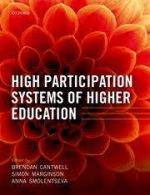
High Particpation Systems of Higher Education.
Brendan Cantwell, Romulo Pinheiro, Marek Kwiek. Governance. In: Simon Marginson, Brendan Cantwell and Anna Smolentseva, eds., High Particpation Systems of Higher Education. Oxford: Oxford University Press. 2018. 68-93.
Abstract: Assessing global tendency towards high participation involves better understanding the dynamics specific to high participation systems (HPS). This chapter takes up the question of governance, understood as the set of mechanisms by which individual higher education institutions are controlled and directed and by which higher education systems are coordinated. As the preceding statement implies, governance surely involves rationalization: ‘It is the means by which order is created in the academy to achieve the goals of educating, researching, and providing service to multiple publics’ (Austin and Jones, 2016: 2). Goal attainment, quality assurance, and mission (horizontal) differentiation are key elements of rationalized governance systems. Following interest articulation models (Baldridge, 1971), governance is understood as rational political processes in which multiple stakeholders negotiate goals and mechanisms of control. HPS governance, however, involves not only rational negotiation among stakeholders but also the exercise of power and social contest (Pusser, 2004). Establishing the goals of higher education, as well as the means by which goals are to be achieved, is the source of considerable political struggle and governance, and is at least partly the result of contest among social factions (Ordorika, 2003; Pusser, 2004).

The Idea of the University. Contemporary Perspectives.
Marek Kwiek. The University and the State in Europe. The Uncertain Future of the Traditional Social Contract. In: Ronald Barnett and Michael Peters, eds, The Idea of the University. Contemporary Perspectives, volume 2, New York: Peter Lang, 2018. 176-191. Here.
Abstract: Europe is witnessing general attempts at a reformulation of the post-war social contract which gave rise to the welfare state as we know it (with public higher education as we know it). I argue here for a strong thesis according to which Europe is facing the simultaneous renegotiation of the postwar social contract concerning the welfare state and the accompanying renegotiation of a smaller-scale, by comparison, modern social pact between the university and the nation-state. The renegotiation of the (nation) state/university pact is not clear outside of the context of the changing welfare state contract, as state-funded higher education formed one of the bedrocks of the European welfare system in its major forms, and state-funded higher education remains one of its foundations. I am following here Stephan Leibfried and colleagues who argue that “competitive pressure to lower tax rates undermines the state’s resources and has the potential to unleash financial crises that, in turn, trigger cuts in welfare spending” (Hurrelmann et al. 2007: 7). Consequently, what they term “the golden-age constellation” of the four components of the state (the territorial state, the constitutional state, the democratic welfare state and the interventionist state) is currently threatened: “different state functions are threatened to a greater or lesser degree, and subjected to pressures for internationalization of varying intensity” (Hurrelmann et al. 2007: 9). I argue here that higher education policies, and especially public funding for universities, are one of the dimensions of the “golden-age constellation” under renegotiations in Europe today: they come under the “interventionist state” and its functions in Leibfried’s formulation.
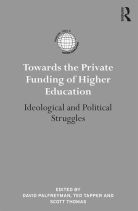
Towards the Private Funding of Higher Education. Ideological and Political Struggles.
Marek Kwiek. The Robust Privateness and Publicness of Higher Education: Expansion through Privatization in Poland. in: David Palfreyman, Ted Tapper and Scott Thomas, eds., Towards the Private Funding of Higher Education. Ideological and Political Struggles New York: Routledge (International Studies in Higher Education), 2018. 90-111. Here.
Abstract: Privatization of higher education is closely linked to its expansion: when systems expand, there appears a fundamental question of how to fund them from the public purse. The growth of higher education in Poland under the communist regime (1945–1989), and especially in the 1970s and 1980s, was frozen: enrolments were stable and higher education was largely inaccessible. Privatization following the 1989 regime change had two crucial dimensions: ideological (accompanying massive privatizations in the economy in general) and financial (financial austerity affecting all public sector services). The financial dimension of privatization was more important, and it was accompanied by a general lack of interest in social policies from policy-makers in the midst of large-scale economic reforms. In discussing privatization in higher education, the Polish case study is important for two reasons. First, Poland has been the European country with the biggest private sector enrolments. Expansion through privatization in 1990–2005 was a successful experiment of increasing participation through a demand-absorbing private subsector, using private rather than public funding. Second, Poland shows the powerful role of changing demographics and stable politics in the changing public-private dynamics in higher education. Once the champion of privatization, Poland—through a combination of demographic and political factors—became a radically de-privatizing system in which expansion and privatization were replaced by contraction and de-privatization. Between 2009 and 2015, the number of private providers shrank from 330 to 265; private sector enrolments in 2006–2015 fell by half, from 660,000 to 330,000 students; and the role of fees in the public sector and in the national system declined significantly, with the number of fee-paying students in both sectors declining by half, from 1.14 million (2006) to 0.56 million (2015). The demographic factor was predictable—but political willingness to support the public sector expansion was not. In a zero-sum game in which students are either publicly financed or privately financed, privatization processes in higher education have been slowing down for a decade now, and de-privatization processes are expected to intensify. Expansion through privatization emerges as being highly sensitive to demographics and public funding; when the student population is contracting and the state is willing and able to keep financing the shrinking public sector, the private sector is doomed. Rare as it is today, de-privatization and contraction of higher education is an interesting trend in otherwise globally privatizing and expanding higher education.
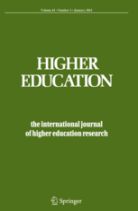
Higher Education.
Marek Kwiek. De-privatization in Higher Education: A Conceptual Approach. Higher Education. 74, 259–281 (2017). Here.
Abstract: This paper seeks to conceptualize the processes of de-privatization in higher education. Trends of de-privatization (and contraction in enrolments) are highly interesting because they go against global trends of privatization (and educational expansion). Deprivatization means a decreasing role for the private component in the changing public– private dynamics. The paper studies its two dimensions (funding and provision) and distinguishes between seven potential empirical organizational/geographical levels of analysis. Empirically, the paper draws from data from Central Europe. The traditional dichotomous pairing of the public and the private is shown to still be useful in specific empirical contexts, despite it becoming blurred globally. Major approaches to privatization in higher education over the last two decades are rethought and redirected toward deprivatization. An empirically informed notion of de-privatization is being developed and its usefulness is briefly tested.
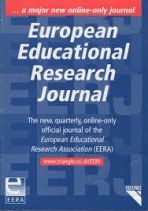
European Educational Research Journal.
Marek Kwiek. A Generational Divide in the Polish Academic Profession. A Mixed Quantitative and Qualitative Approach. European Educational Research Journal. Vol. 16(5) (2017). 645-669. Here.
Abstract: In a recently changing Polish academic environment – following the large-scale higher education reforms of 2009–2012 – different academic generations have to cope with different challenges. Polish academics have been strongly divided generationally, not only in terms of what they think and how they work but also in terms of what is academically expected from them following the reforms. This article explores intra-national cross-generational differences based on a combination of quantitative (surveys, N = 3704) and qualitative (interviews, N = 60) primary empirical evidence used according to the mixed-methods approach methodology and its ‘sequential’ research design. This article explores the major dimensions of the intergenerational divide between younger and older academic generations (and how they are related to both post-1989 developments and recent reforms). It shows the power of research at a micro-level of individuals, complementing the traditional research at aggregated institutional and national levels. Implications for Central European systems are shown.
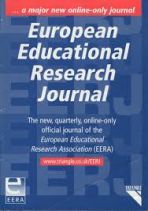
European Educational Research Journal.
Michael Dobbins, Marek Kwiek. Europeanisation and Globalisation of Higher Education in Central and Eastern Europe: 25 Years of Changes Revisited (1990-2015). Introduction to a Special Issue. European Educational Research Journal. Vol. 16(5) (2017) 519–528. Here.
Abstract: For most countries it is safe to say that higher education (HE) is the segment of the education system which has changed the most over the past 50 years. Expansion, massification, greater female participation, privatization, the diversification of programmes, and more recently internationalization and globalization processes have radically transformed national HE systems. In Central and Eastern Europe (CEE), these processes of change have not only been much more abrupt and fastpaced than in the West, but have also run parallel to all-embracing political, economic and social transformations and, in many cases, nation-building. HE policy-makers in the region have been forced to tackle essentially all contemporary challenges confronting western HE systems within a much tighter timeframe and under much greater political and economic strain. HE reform has run parallel to the democratization of political institutions, the introduction of capitalism and, more recently, European integration. To complicate matters, CEE universities simultaneously struggled with the restoration of university self-governance and autonomy, academic freedoms, and the renewal of the academic profession. In numerous cases, HE was also at the apex of complicated national language and identity issues.

Higher Education in Austerity Europe.
Marek Kwiek. Higher Education, Welfare States and Austerity: Pressures on Competing Public Institutions. In: Jon Nixon (ed.), Higher Education in Austerity Europe. London: Bloomsbury. 2017. 20-38. Here.
Abstract: „Financial austerity” is not a post-crisis (2008 and beyond) phenomenon. As a concept, it was used in welfare state research at least a decade earlier, although it does not seem to have been used in higher education studies until recently. “Permanent austerity” determines daily operations and institutional strategies for the future of universities across Europe. This chapter is about an increasing internal competition between major components of the widely understood welfare state architecture as it has emerged in the last half a century: in particular, between old-aged pensions, healthcare systems and higher education and academic research as major claimants to the public purse. The competition is not only for public funding; it is also for the place these three public institutions occupy in social imagination. The assumption of this chapter is that public institutions cannot thrive without powerful supportive discourses concerning their social roles. When these discourses weaken, institutions weaken together with them. I focus on an ongoing (and still largely latent) struggle between major public institutions, with some predictions about its outcome. Permanent financial austerity may redefine the nature of the European university as a public institution. Its future depends on favorable social attitudes and strong supporting public discourses, both changeable under economic, ideological and electoral pressures. Public trust indirectly determines the level of public subsidization, being redefined after a long period of postwar growth when the cross-sectoral competition between the different public-sector claimants for public funding was not present. Comfortably friendly before the age of financial austerity came, different public services in Europe are now beginning to operate in the context of increasing competition: for social trust, public support and public funding.

Policy Analysis of Structural Reforms in Higher Education. Processes and Outcomes.
Dominik Antonowicz, Marek Kwiek and Don F. Westerheijden. The Government Response to the Private Sector Expansion in Poland. In: H. de Boer, J. File, J. Huisman, M. Seeber, M. Vukasovic and D.F. Westerheijden, eds., Policy Analysis of Structural Reforms in Higher Education. Processes and Outcomes. Cham: Palgrave. 119-140. Here.
Abstract: One of the trademarks of transformation of Polish higher education is its tumultuous and inconsistent path of development driven by the rapid growth of private sector higher education. Such an expansion has been often described as a ‘sudden, shocking and unplanned’ phenomenon which revolutionized the institutional landscape of higher education in Central and Eastern Europe (Levy, 2007, p. 280). Also in Poland, the rise of private higher education is perhaps one of those aspects of the Polish higher education that caused revolutionary and far-reaching changes whose significance can be hardly overestimated. It also attracts scholars’ attention (e.g. Duczmal and Jongbloed, 2007; Antonowicz, 2016; Duczmal, 2006; Kwiek, 2012). However, clearly, there is still a knowledge gap in regards to the analysis of coping with the expansion and with governmental efforts to take control over the process of galloping expansion and securing minimum quality standards in (especially private) higher education.


